We’ve already looked at detective shows on every major network including multi-network, ABC, CBS, NBC, and Mutual Detective shows. Now we turn to programs that were aired in syndication.
Syndicated programming allowed radio stations to fill blocks of programming not filled by network shows and allowed local and regional businesses that couldn’t afford to sponsor network programs.
While network shows were aired once and often lost, syndicated programs aired in different markets for decades after their original creation date which explains why many syndicated shows survive with almost entirely complete runs. One challenged with syndicated programs is that it’s very hard to determine when shows were first aired, as any number of radio stations may have been the first to play the program.
As always, I asked our Facebook friends to vote and forty-eight shared their favorites.
5) Mystery is My Hobby
Produced: 1947-49
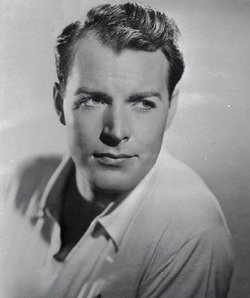 Mystery is My Hobby starred Glen Langan as Barton Drake, a mystery writer who solves crimes. Each episode was a lighthearted whodunit aided by the upbeat suave performance of Langan as the sleuth. Langan was practically the opposite of Raymond Chandler’s hard-boiled sleuth. You can’t get much further opposite of “Trouble is my business” than “Mystery is my Hobby.” At the end of each episode, Barton Drake would remind us that “mystery is my hobby.”
Mystery is My Hobby starred Glen Langan as Barton Drake, a mystery writer who solves crimes. Each episode was a lighthearted whodunit aided by the upbeat suave performance of Langan as the sleuth. Langan was practically the opposite of Raymond Chandler’s hard-boiled sleuth. You can’t get much further opposite of “Trouble is my business” than “Mystery is my Hobby.” At the end of each episode, Barton Drake would remind us that “mystery is my hobby.”
The show was originally called, “Murder is My Hobby” but while the staff thought the original name was funnier, the sponsor who paid for the show’s national run didn’t. The sponsor was Mutual Benefit Life Insurance Company of Omaha.
The show features perhaps the most compliant police officer assistant for a sleuth in Inspector Noah Danton who is apparently allowed by his department to serve as the nearly full-time sidekick of Barton Drake. The two are rarely apart and Danton even accompanies Drake when he’s out of town.
Sixty-five years later, the episodes still make for fun and relaxing listening as for twenty-five minutes, mystery becomes our hobby.
Fan vote: 4%
4) The Adventures of Frank Race
Produced: 1949
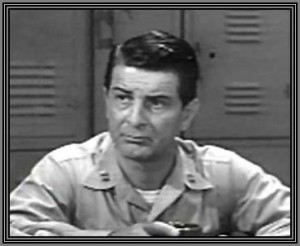 The war changed many things – the face of the earth and the people on it.
The war changed many things – the face of the earth and the people on it.
This exciting syndicated series focused on an Attorney whose World War II service brought him into the O.S.S. After the war, rather than returning to the practice of the law, he became a freelance troubleshooter. The cases that Race took on ranged from insurance cases to international spying. Thus, Frank Race’s adventures were a mixture of Johnny Dollar and the Man Called X.
The show was well-written with a fantastic theme by Ivan Ditmars. Frank Race was played first by Tom Collins (Eps 1-21) and then by character actor Paul Dubov (22-43). Tony Barrett throughout the series provided the voice for Cabbie Marc Donovan, one of radio’s most able sidekicks. The show also featured some of radio’s best players as guest stars including Gerald Mohr, Frank Lovejoy, and Virginia Gregg.
Fan Vote: 0%
3)The New Adventures of Michael Shayne with Jeff Chandler
Produced: 1947-48
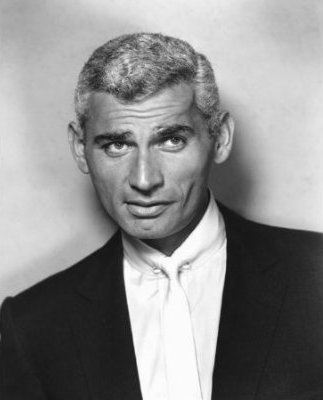 After the Mutual Network’s comedy mystery version of Michael Shayne ended, Bill Rouseau took his turn with the character. The result was one of the most sterling of the hard boiled detective shows.
After the Mutual Network’s comedy mystery version of Michael Shayne ended, Bill Rouseau took his turn with the character. The result was one of the most sterling of the hard boiled detective shows.
While in the novels, Shayne lived in Miami, Rouseau placed Shayne in New Orleans, a city full of mystery and a perfect place for a Noirish radio series. Jeff Chandler played the role of the two fisted tough guy private eye. The show was also noteworthy, featuring Jack Webb in the recurring role as Lieutenant LeFevre, Shayne’s policeman foil.
The mysteries would never win an Edgar, with often simplistic solutions. However, during its 26-episode run, the show offered plenty of first fights, excitement, Mickey Finns, and femme fatales. The New Adventures of Michael Shayne continued to be resold and resyndicated well into the late 1960s.
Fan Vote: 4%
2) Boston Blackie with Richard Kollmar
Produced: 1945-50
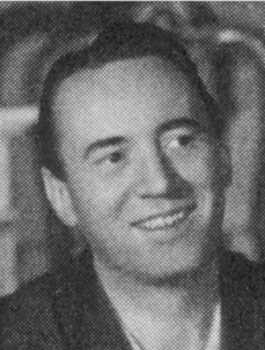 Boston Blackie was an epic character for around half a century with silent films, talkies, radio, and finally television. In 1944, Boston Blackie first came to radio with Chester Morris playing Boston Blackie, the role he was most remembered for in films. A syndicated version was launched by Frederick Ziv with Richard Kollmar, who was otherwise best known for the live morning radio show he did his wife, Breakfast with Dick and Dorothy.
Boston Blackie was an epic character for around half a century with silent films, talkies, radio, and finally television. In 1944, Boston Blackie first came to radio with Chester Morris playing Boston Blackie, the role he was most remembered for in films. A syndicated version was launched by Frederick Ziv with Richard Kollmar, who was otherwise best known for the live morning radio show he did his wife, Breakfast with Dick and Dorothy.
When Boston Blackie made his first appearance, he was a thief. But by the mid-1940s, Blackie had abandoned his life of crime and was completely law-abiding. He was “enemy to those who had no enemy and friend to those who had no friend.” Blackie’s problem was that someone hadn’t let Inspector Farraday of the police force in on the development. Practically every week, Inspector Farraday tried to arrest Blackie for a crime, usually murder, only for Blackie to escape and present Farraday the real criminal, thus clearing his name and guaranteeing his freedom until next week. Over the years, Farraday does begin to ease up and have a more cordial relationship with Blackie. Hearing this development in the relationship between the two characters is one of the noteworthy characteristics of Boston Blackie.
Kollmar played the character as smooth, suave, and wise-cracking. Blackie could handle himself with a gun or his fists, and was a tough man for either the police or criminals to hold onto.
The show’s mysteries are a mixed bag of clever stories and somewhat obvious ones. The score uses a relatively light organ score which fits the mood of the show. It also didn’t have the high profile guest actors that other programs did, but it was still very popular with listeners.
While it wasn’t unusual for a syndicated show to have a second season of episodes, there were nearly 300 individual episodes of Boston Blackie produced, and if you have any doubts as to why the show lasted that long, you only need to take a listen to find out why.
Boston Blackie came to television for two seasons, in a mostly forgotten TV series that didn’t make anyone forget the movies or the radio show.
Fan Vote: 33%
1) Box 13 starring Alan Ladd
Produced: 1947-48
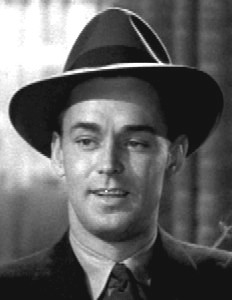
Dan Holiday, a reporter turned mystery writer comes up with an original way to come up with plots his stories, placing an ad in the paper, “Adventure Wanted: Will go anywhere, will do anything. Write Box 13 c/o of the Star Times.”
With Alan Ladd as both star and producer, Box 13 became one of radio’s most exciting shows. As Ladd was not a professional detective, writers had a free hand in writing adventures for Holiday. His many adventures included infiltrating a car theft ring, going to the bayous of Louisiana to help a man who believes he’s under a voodoo curse, intrigue with a jewel thief in Paris, and encountering a murderous psychopath who has chosen Holiday as his next target.
Ladd’s acting was spot on and his resonant voice was perfect for radio. Ladd was able to draw some of the finest guest actors in radio including Gerald Mohr, Frank Lovejoy, and Alan Reed. Sadly, the program didn’t include credits, so for many guest appearances, we can only take educated guesses.
While the show had numerous writers, the scripts were usually good, though occasionally uneven.
Box 13 continued to be resyndicated into the 1990s. The program also helped Ladd to increase his popularity with the American public with Box 13 being a fantastic showcase for his talent. In 1954, Land reprised his role as Dan Holiday on television, adapting the radio episode, “Daytime Nightmare” as an episode of the G.E. True Theater, “Committed.”
Fan Vote: 58%
Honorable mention:
Dr. Tim, Detective: This was one of the few mystery shows made for kids. The 13 episode serial is a pleasant mix of education and entertainment and education as Dr. Tim’s medical mysteries educated kids about such interesting facts as the uses of blood in vaccination and the treatment of tuberculosis. These 15 minute shows are well-done for both kids and adults.
This concludes our series. Thanks so much for following along.
If you enjoyed this post, you can have new posts about Detective stories and the golden age of radio and television delivered automatically delivered to your Kindle.
Below is a recap of both my rankings in each category as well as how fans on Facebook voted:
| My Pick | Facebook Pick |
| Pat Novak for Hire | Pat Novak for Hire |
| The Fat Man | Sherlock Holmes |
| Defense Attorney | The Fat Man |
| Sherlock Holmes (Tom Conway) | I Deal in Crime |
| I Deal in Crime | Defense Attorney |
| My Pick | Facebook Pick |
| Adventures of Philip Marlowe | Johnny Dollar |
| Yours Truly Johnny Dollar | Casey |
| Adventures of Rocky Jordan | Philip Marlowe |
| Broadway’s My Beat | Rocky Jordan |
| Casey Crime Photographer | Broadway’s My Beat |
| My Pick | Facebook Pick |
| Let George Do It | Let George Do It |
| Nick Carter | Hercule Poirot |
| Casebook of Gregory Hood | Michael Shayne |
| Hercule Poirot | Nick Carter |
| Michael Shayne (Wally Maher) | Gregory Hood |
| My Pick | Facebook Pick |
| Dragnet | Dragnet |
| Night Beat | Nero Wolfe |
| Dangerous Assignment | Dangerous Assignment |
| Barrie Craig | Night Beat |
| Nero Wolfe | Barrie Craig |
| My Pick | Facebook Pick |
| Richard Diamond | Sherlock Holmes |
| Sherlock Holmes (Rathbone) | Richard Diamond |
| Sam Spade | Sam Spade |
| The Saint | The Saint |
| A Man Called X | A Man Called X |
Syndicated
| My Pick | Facebook Pick |
| Box 13 | Box 13 |
| Boston Blackie | Boston Blackie |
| Michael Shayne (Jeff Chandler) | Michael Shayne |
| Frank Race | Mystery is My Hobby |
| A Man Called X | Frank Race |

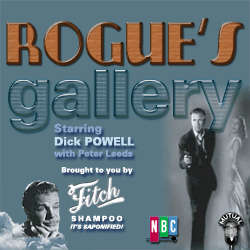
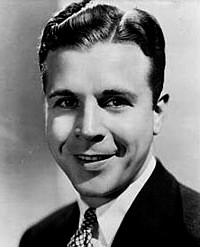 Dick Powell (1904-63): Dick Powell is one of the most distinct leading men in the world of Old Time Radio Detectives. He spent the first part of his entertainment career, playing young singing romantic leads. At the age of 40, he landed the part of Philip Marlowe in
Dick Powell (1904-63): Dick Powell is one of the most distinct leading men in the world of Old Time Radio Detectives. He spent the first part of his entertainment career, playing young singing romantic leads. At the age of 40, he landed the part of Philip Marlowe in 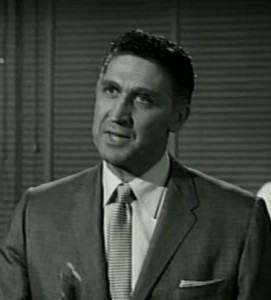 Peter Leeds (1917-96): Peter Leeds was a character actor’s character actor. He made 3000 appearances coupled with an astounding 8000 television shows that included guest appearances on Dragnet, Adam 12, Checkmate, Sanford and Son, Charlie’s Angels, Hawaii 5-0, Perry Mason, The Flying Nun, and almost any show you could think of that aired between the 1950s and the 1970s. He slowed down towards the end of the 70s but continued to act until 1987.
Peter Leeds (1917-96): Peter Leeds was a character actor’s character actor. He made 3000 appearances coupled with an astounding 8000 television shows that included guest appearances on Dragnet, Adam 12, Checkmate, Sanford and Son, Charlie’s Angels, Hawaii 5-0, Perry Mason, The Flying Nun, and almost any show you could think of that aired between the 1950s and the 1970s. He slowed down towards the end of the 70s but continued to act until 1987.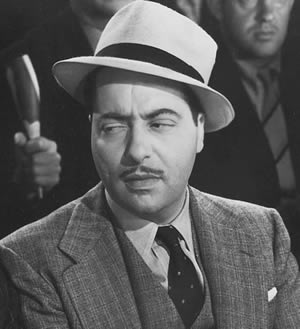 Americans were interested in Hercule Poirot going back several years. Orson Welles first brought the character to the radio in a Campbell’s Playhouse presentation of “The Murder of Roger Akroyd.” In 1942-43, 3 Hercule Poirot Short stories were adapted for the Mutual program, Murder Clinic.
Americans were interested in Hercule Poirot going back several years. Orson Welles first brought the character to the radio in a Campbell’s Playhouse presentation of “The Murder of Roger Akroyd.” In 1942-43, 3 Hercule Poirot Short stories were adapted for the Mutual program, Murder Clinic.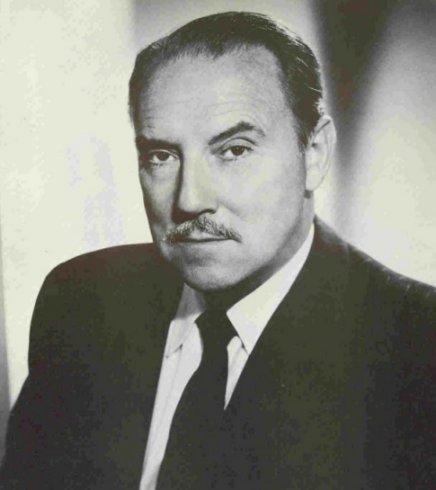 The Casebook of Gregory Hood began as a Summer replacement for Sherlock Holmes with Gale Gordon as San Francisco-based antiques dealer Gregory Hood.
The Casebook of Gregory Hood began as a Summer replacement for Sherlock Holmes with Gale Gordon as San Francisco-based antiques dealer Gregory Hood.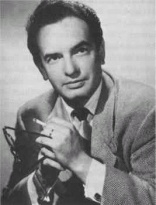 a detective series. Lewis did the most portrayals of Hood, however only five of his programs survive. The Casebook of Gregory Hood shut down in May of 1947 and Lewis starred in Voyage of the Scarlet Queen until March 1948 when he resumed his role as Hood over the Don Lee Mutual Broadcasting system. This entire 52 episode 1948-49 run is missing, as is ABC run that ran from 1950-51.
a detective series. Lewis did the most portrayals of Hood, however only five of his programs survive. The Casebook of Gregory Hood shut down in May of 1947 and Lewis starred in Voyage of the Scarlet Queen until March 1948 when he resumed his role as Hood over the Don Lee Mutual Broadcasting system. This entire 52 episode 1948-49 run is missing, as is ABC run that ran from 1950-51.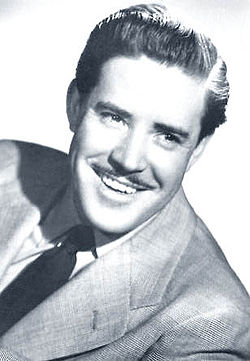 Nick Carter had his origins in dime novels, and the show reflected that with cases that included not only mystery but adventures with often unusual perils, and titles such as, “Body on the Slab” and “Nine Hours to Death.” In the pre-hard-boiled era, there was no detective on radio who was as tough or as resourceful in a jam as Nick Carter.
Nick Carter had his origins in dime novels, and the show reflected that with cases that included not only mystery but adventures with often unusual perils, and titles such as, “Body on the Slab” and “Nine Hours to Death.” In the pre-hard-boiled era, there was no detective on radio who was as tough or as resourceful in a jam as Nick Carter.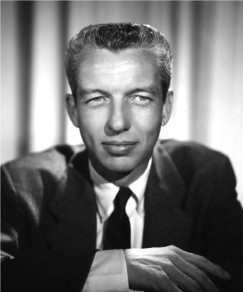 The story of Let George Do It is the story how one of radio’s weakest comedies became one of its finest detective shows. Let George Do It began in 1946 as a detective comedy that took its comedy way too far. Shows like Leonidas Witherall, The Thin Man, and Mr. and Mrs. North included comedy in their mysteries. None of them thought of including a laugh track.
The story of Let George Do It is the story how one of radio’s weakest comedies became one of its finest detective shows. Let George Do It began in 1946 as a detective comedy that took its comedy way too far. Shows like Leonidas Witherall, The Thin Man, and Mr. and Mrs. North included comedy in their mysteries. None of them thought of including a laugh track.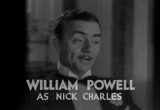 William Powell (1892-1984): Powell was well-known for his portrayal of Nick Charles, as well as the other films he made with co-star Myrna Loy, including the Oscar-winning The Great Ziegifield. He was nominated for three Best Actor Oscars, including one for The Thin Man and one for My Man Godfrey. He also starred in six Philo Vance movies between 1929-34, as well as the political satire “The Senator was Indiscrete”, and twice recreated it for the radio.
William Powell (1892-1984): Powell was well-known for his portrayal of Nick Charles, as well as the other films he made with co-star Myrna Loy, including the Oscar-winning The Great Ziegifield. He was nominated for three Best Actor Oscars, including one for The Thin Man and one for My Man Godfrey. He also starred in six Philo Vance movies between 1929-34, as well as the political satire “The Senator was Indiscrete”, and twice recreated it for the radio.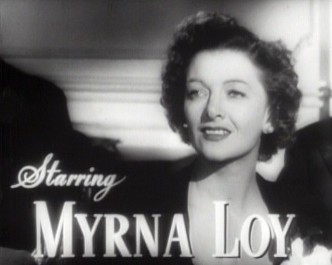 Myrna Loy (1905-93): The height of her career was starring opposite Powell. After The Thin Man was released, she was voted Queen of the Movies by radio audiences. She had a career spanning from the 1920s to the 1980s. While Powell disappeared from acting, Loy continued to appear on television on shows such as Columbo into her mid-70s.
Myrna Loy (1905-93): The height of her career was starring opposite Powell. After The Thin Man was released, she was voted Queen of the Movies by radio audiences. She had a career spanning from the 1920s to the 1980s. While Powell disappeared from acting, Loy continued to appear on television on shows such as Columbo into her mid-70s.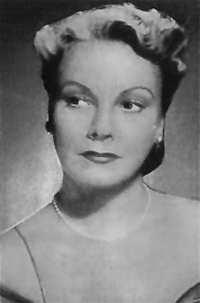 Claudia Morgan (1911-74): Claudia Morgan was a veteran of stage, screen, and radio. She was best known for playing Nora Charles throughout the run of the Thin Man on a wide variety of different networks and co-stars. In 1954, she returned as a detective’s spouse again in NBC’s Adventure of the Abbotts and, for several episodes, she was reunited with Thin Man co-star Les Damon.
Claudia Morgan (1911-74): Claudia Morgan was a veteran of stage, screen, and radio. She was best known for playing Nora Charles throughout the run of the Thin Man on a wide variety of different networks and co-stars. In 1954, she returned as a detective’s spouse again in NBC’s Adventure of the Abbotts and, for several episodes, she was reunited with Thin Man co-star Les Damon. Les Damon (1908-62): Damon was a versatile actor who played several detectives during the golden age of radio. While his most famous part was as Michael Waring in The Falcon, he also played Nick Charles on The Thin Man, Pat Abbott on The Adventures of the Abbotts, and Mark Sabre on ABC Mystery Theater. On television, he guest-starred in several episodes of the Honeymooners and the Jackie Gleason Show.
Les Damon (1908-62): Damon was a versatile actor who played several detectives during the golden age of radio. While his most famous part was as Michael Waring in The Falcon, he also played Nick Charles on The Thin Man, Pat Abbott on The Adventures of the Abbotts, and Mark Sabre on ABC Mystery Theater. On television, he guest-starred in several episodes of the Honeymooners and the Jackie Gleason Show.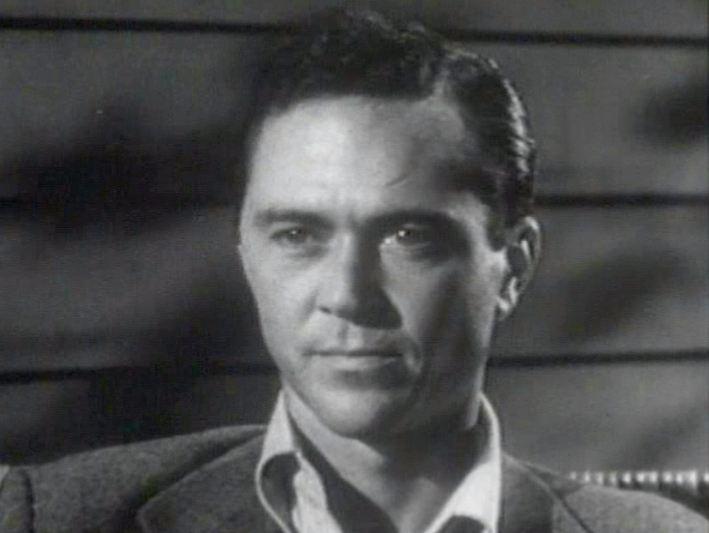 $$Charles Russell: Russell (1918-1985) was a Hollywood bit player that won the part as the second Johnny Dollar. He played the lead in
$$Charles Russell: Russell (1918-1985) was a Hollywood bit player that won the part as the second Johnny Dollar. He played the lead in  $$$Edmund O’Brien became the second on-air Johnny Dollar in February 1950. O’Brien had previously played an insurance investigator in the 1947 film The Killers. He’d previously tried to break in to hardboiled radio drama when he recorded the pilot episode for Nightbeat, but the role instead went to Frank Lovejoy. Growing up O’Brien was the next door neighbor to Harry Houdini, and he had his first break in acting in Orson Welles’ Mercury Theater. After O’Brien left Johnny Dollar after the 1951-52 season, he won a Best Supporting Actor Oscar and Best Supporting Actor Golden Globe for his role in The Barefoot Contessa. He got a second Golden Globe and a nomination for a second Oscar ten years later for his role in Seven Days in May. Over the course of his long career in film and television, O’Brien played in every genre and a wide variety of roles. From a poisoned accountant trying to solve his own Murder in DOA to the heavy in Pete Kelly’s Blues, the role of Crowley in The Further Adventures of Gallegher, Syndicated Private Detective Johnny Midnight, and much more. O’Brien left behind a legacy that his Johnny Dollar performances compliment. For more on Mr. O’Brien, visit this
$$$Edmund O’Brien became the second on-air Johnny Dollar in February 1950. O’Brien had previously played an insurance investigator in the 1947 film The Killers. He’d previously tried to break in to hardboiled radio drama when he recorded the pilot episode for Nightbeat, but the role instead went to Frank Lovejoy. Growing up O’Brien was the next door neighbor to Harry Houdini, and he had his first break in acting in Orson Welles’ Mercury Theater. After O’Brien left Johnny Dollar after the 1951-52 season, he won a Best Supporting Actor Oscar and Best Supporting Actor Golden Globe for his role in The Barefoot Contessa. He got a second Golden Globe and a nomination for a second Oscar ten years later for his role in Seven Days in May. Over the course of his long career in film and television, O’Brien played in every genre and a wide variety of roles. From a poisoned accountant trying to solve his own Murder in DOA to the heavy in Pete Kelly’s Blues, the role of Crowley in The Further Adventures of Gallegher, Syndicated Private Detective Johnny Midnight, and much more. O’Brien left behind a legacy that his Johnny Dollar performances compliment. For more on Mr. O’Brien, visit this 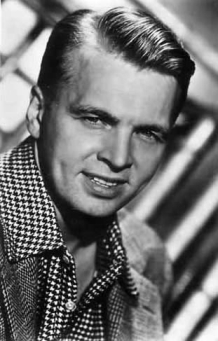
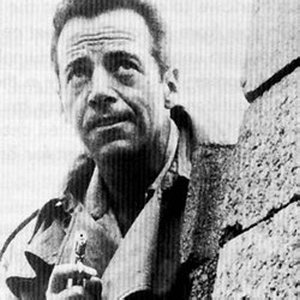 $$$$$ Gerald Mohr (1914-68) Mohr’s most memorable lead role was as radio’s Philip Marlowe. Arguably, Mohr’s version of Marlowe is definitive both in terms of quality and quantity of performances. His opening line from Philip Marlowe, “Get this, and get it straight: Crime is a sucker’s road and those who travel it wind up in the gutter, the prison or the grave. There’s no other end … but they never learn!” was among the best openings to any radio show and Mohr’s delivery made it happen in a way that few other actors could manage.
$$$$$ Gerald Mohr (1914-68) Mohr’s most memorable lead role was as radio’s Philip Marlowe. Arguably, Mohr’s version of Marlowe is definitive both in terms of quality and quantity of performances. His opening line from Philip Marlowe, “Get this, and get it straight: Crime is a sucker’s road and those who travel it wind up in the gutter, the prison or the grave. There’s no other end … but they never learn!” was among the best openings to any radio show and Mohr’s delivery made it happen in a way that few other actors could manage.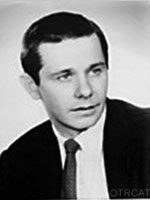 $$$$$$$Bob Readick (1925-85): A child star who appeared on Broadway as a teenager. In his later years, Readick became a Soap Opera star.
$$$$$$$Bob Readick (1925-85): A child star who appeared on Broadway as a teenager. In his later years, Readick became a Soap Opera star.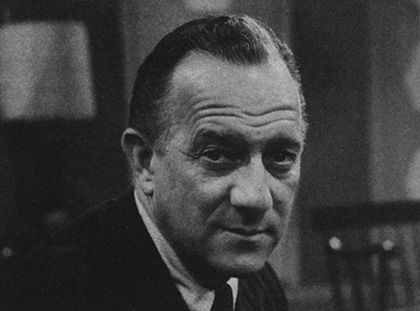 $$$$$$$$ Mandel Kramer (1916-89): Mandel Kramer was a veteran radio and television actor. His first radio appearance in circulation is a 1940 episode of the Columbia Workshop. He became a regular on the long-running crime and counterespionage series, Counterspy. He made many guest appearances on programs such as Casey, Crime Photographer, Gangbusters, The Whistler, and X Minus One. Towards the end of the Golden era of radio, Kramer began to get leading roles, playing Pat Abbott in the Adventures of the Abbotts, and Greg Collins in It’s a Crime, Mr. Collins. In 1961, Kramer took the role of Johnny Dollar over from Bob Readick who had acted as a caretaker, and played the role of Dollar until Yours Truly, Johnny Dollar went off the air in September 1962. Kramer remained busy with his television work, with a support role in the long-running TV soap, The Edge of Night that netted him an Emmy Nomination for Best Supporting Actor in 1979. Kramer returned to radio in the mid-70s with several appearance on the CBS Mystery Theater.
$$$$$$$$ Mandel Kramer (1916-89): Mandel Kramer was a veteran radio and television actor. His first radio appearance in circulation is a 1940 episode of the Columbia Workshop. He became a regular on the long-running crime and counterespionage series, Counterspy. He made many guest appearances on programs such as Casey, Crime Photographer, Gangbusters, The Whistler, and X Minus One. Towards the end of the Golden era of radio, Kramer began to get leading roles, playing Pat Abbott in the Adventures of the Abbotts, and Greg Collins in It’s a Crime, Mr. Collins. In 1961, Kramer took the role of Johnny Dollar over from Bob Readick who had acted as a caretaker, and played the role of Dollar until Yours Truly, Johnny Dollar went off the air in September 1962. Kramer remained busy with his television work, with a support role in the long-running TV soap, The Edge of Night that netted him an Emmy Nomination for Best Supporting Actor in 1979. Kramer returned to radio in the mid-70s with several appearance on the CBS Mystery Theater.